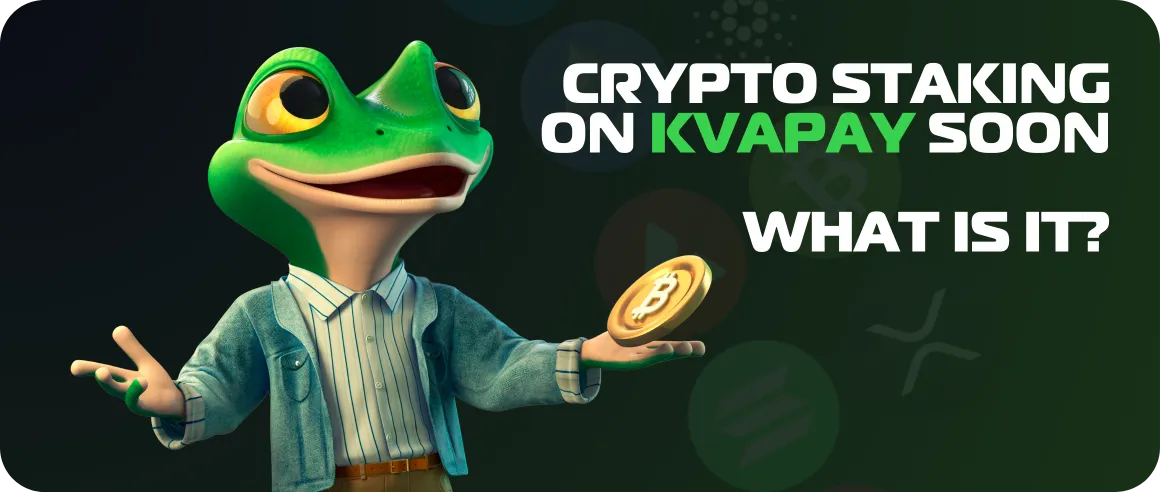We are excited to announce a new feature: crypto staking on KvaPay! In a little while, you will get access to staking, which lets users get rewards for their funds stored in the KvaPay wallet. We decided to tell you what staking is before the feature starts to work. So, let’s begin the introduction to staking with KvaPay!
As mentioned before, staking lets you earn from your stored crypto. Now, does it ring the bell? The concept of staking sounds similar to bank deposits. To remind you what happens when you bring, say $100,000 into the bank: the bank can use your money to lend to other clients and support its operations. In return, you get a reward agreed on when making a deposit. If your APY (Annual Percentage Yield) is 5%, then a year later you are getting an extra $5,000.
Like this, lending your money to a bank is a viable way of protecting your savings from inflation, even though inflation tends to exceed percentage rates slightly. So, if you have large savings in fiat currency, maybe it’s better to bring them to a bank than keep them under your mattress. But this article is about crypto staking, so let’s return to the topic.
What is staking?
Crypto staking is based on a similar principle and it is indeed comparable to bank deposit. One of the differences is that it works only with digital assets. When you commit your crypto savings to stake at KvaPay, you lock your funds to support the system, its health, functionality, and overall operations. In return, you earn rewards similar to your fiat bank deposit percentage.
However, there are other notable differences between staking and bank deposits. When you lend your money to a bank, you essentially give them liquidity to credit other clients. However, while being at stake, your money is used by the blockchain system’s Proof-of-Stake consensus mechanism. This means that instead of trusting a single institution, you give your money to a blockchain that is merely a unity of peer-to-peer members with equal rights.
Now, the main question: how much are you getting off staking? The answer varies; the rewards tend to be within 2%-29% which greatly exceeds those of bank deposits.
Why Exactly Do Blockchains Need Stakes?
The Proof-of-Stake (PoS) blockchains need people to do staking because of how their consensus mechanism works.
PoS consensus mechanism (meaning, the algorithm of transaction verification) chooses validators based on the size of their stakes. The validator possessing the staked crypto uses their coins as collateral supporting their decisions. This makes the network secure because any fraudulent validators risk losing all their money. We mention the condition of losing money but don’t you worry. It doesn’t happen because thanks to it attacks don’t make any economic sense. Also, the attacker has to control 51% of staked coins to trick the system. No one has this many coins.
Additionally, PoS blockchains are faster and more energy-effective. This is all thanks to the consensus mechanism. And for involving in this noble activity, the system compensates you with new crypto just like Proof-of-Work compensates miners for validating the transactions with cryptographic calculations.
There are 4 PoS cryptos on KvaPay: Cardano, MATIC, Tron, and Ethereum. Staking will likely be available for all of them.
Staking is an essential part of many blockchains; it makes them efficient and agile. We are thrilled to bring this feature to our platform for you! Stay updated for our news on our Instagram, we will announce when this feature launches.
Tags:
Share:
